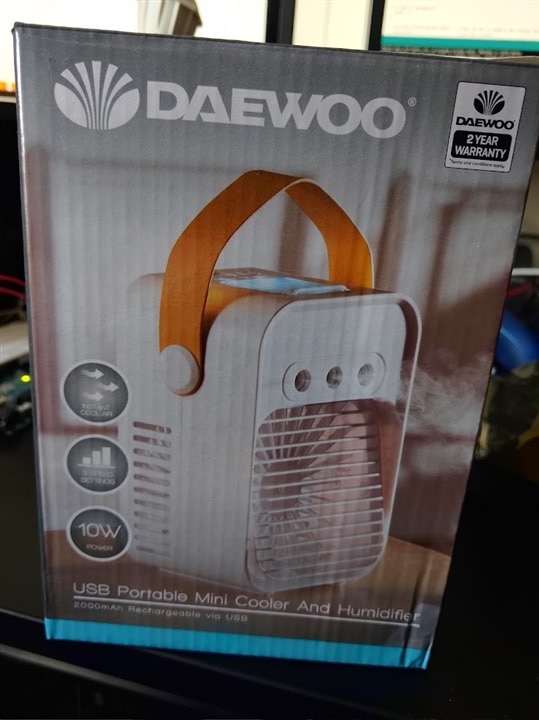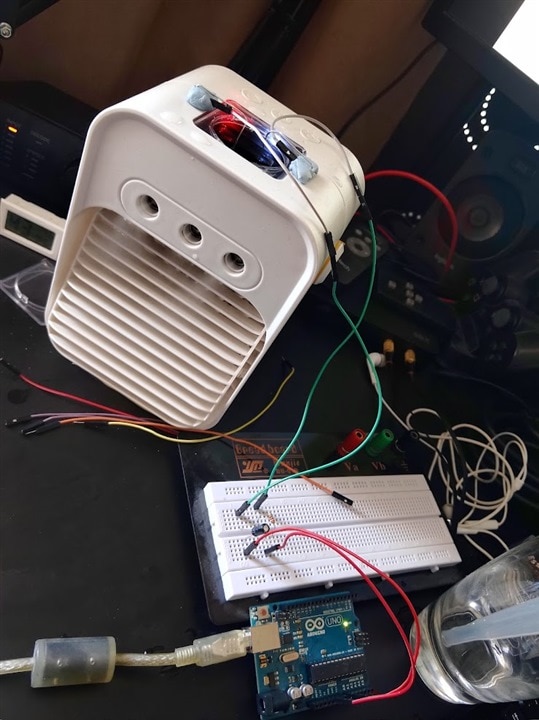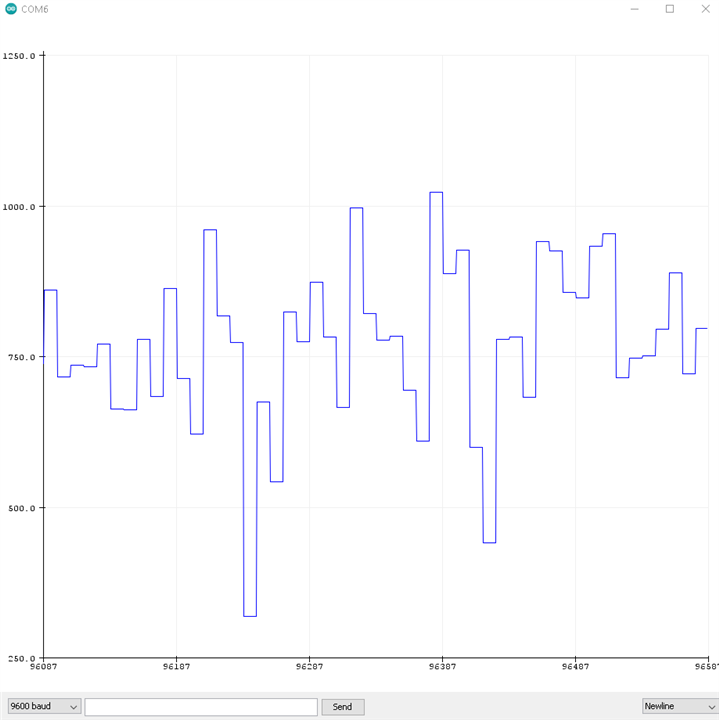It's too warm in the United Kingdom, so I figured I'd invest in a fan/humidifier combo.

The downside to this hardware, is that it will burn itself out. There's nothing detecting when the water reservoir doesn't have water in it. It's convenient enough, 3 modes to the fan, 3 levels of humidifier, battery, and USB rechargeable.
So I figured, why not try to detect how much water is left in it with the hardware I have available? I couldn't wait for looking up too much detail or ordering parts from an online store.
I've no idea what I'm doing, so I figured, let's stick a couple of paperclips in there and connect it to an arduino uno.

So I read a bunch of values, do some buffering with an array, average them out. I get a very rough sine wave into the analog pin.
And then I notice the pattern, the water's low, the values are higher, the water's high, the values are lower. Setup some ranges, great.
Then I realise what I'm measuring when I turn off the humidifier, the paperclips are picking up the electrical noise from the humidifiers in the water
Not quite how I expected to measure if there's water left, but it appears if it's working harder, it's easier to pick up the noise, water isn't the best electrical conductor after all.
Still, I'm sure I should find a better method, but it is a small reservoir, I considered 3D printing something to be able to screw a bottle in to expand it a bit more though.
What do you think?


